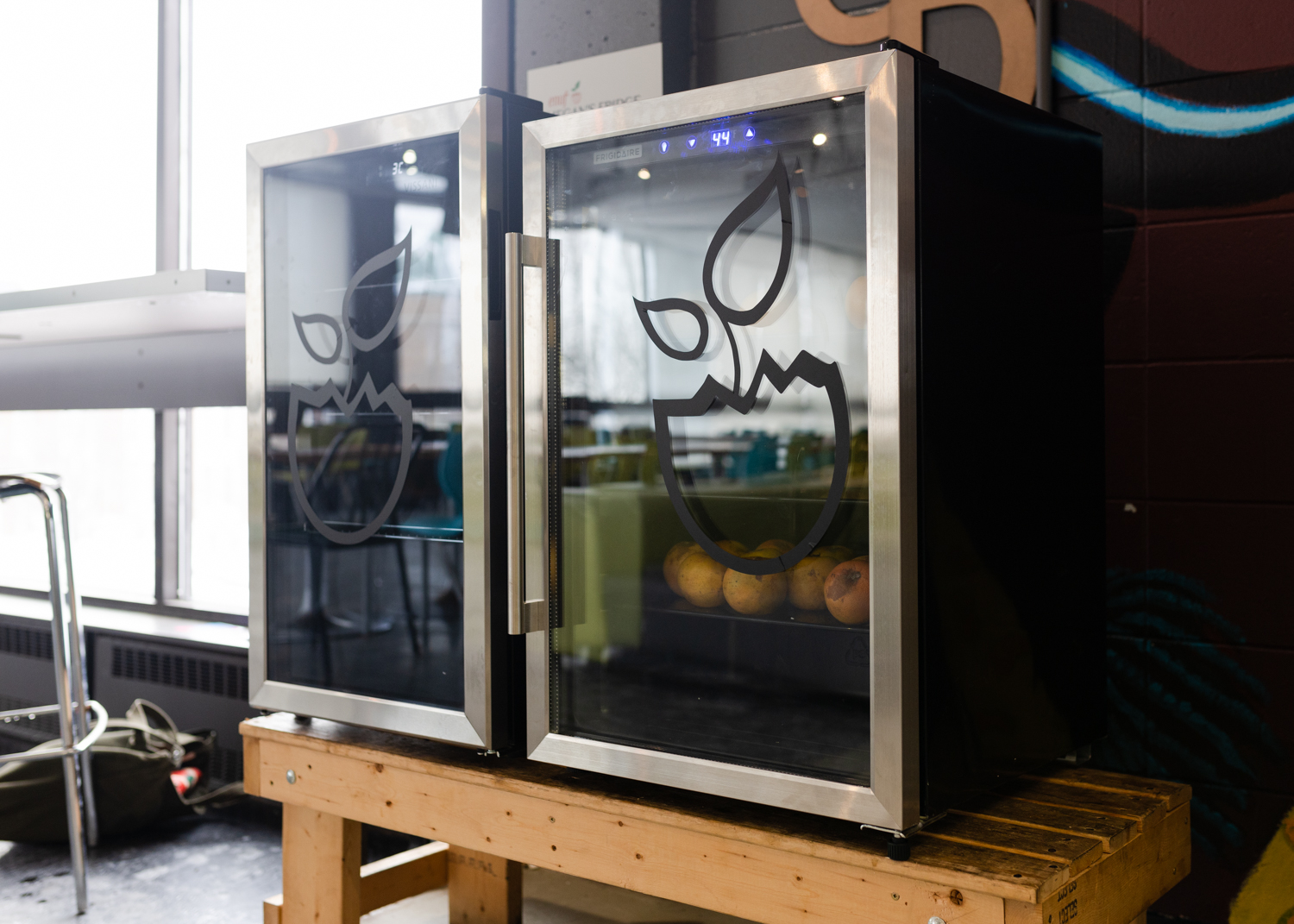Concordia offers plenty of free food, snacks and drinks… if you know where to look!
As the cost of groceries soars with inflation, food insecurity among students cannot be overlooked. This past week, I challenged myself to visit and document places on campus where you can find free food and snacks. I hope this project will encourage you to take what you need, but also to give what you can. These resources are there for you, so take advantage if you need them!
The Community Cravings Pantry in the Hall building, the community fridge and the grocery table offered by the Student Centre at the Loyola campus run on donations. If you can leave something, it’s always appreciated because food disappears quickly! Many other services such as the People’s Potato and The Hive Free Lunch are run by volunteers and also accept donations.
Many events on campus offer free food or snacks, making it a great way to meet new people while grabbing a bite to eat. Another goal of this project is to help students find community through food. Spaces like NouLa and Centre pour étudiant·es francophones offer free snacks and allow students to connect with their community in a welcoming, safe space. Take a look at my week of investigating free eats on campus!
This project uses Alternative (Alt) Text to make the photos accessible to the visually impaired by “convey[ing] the ‘why’ of the image as it relates to the content of a document or webpage. It is read-aloud to users by screen reader software, and it is indexed by search engines.”
Community Cravings Pantry H-725
Alt text: Two tall, white cabinets with the doors open to reveal some groceries like pasta and snacks on the shelves. To the right, there is an empty fridge.
People’s Potato H-700
Alt text: A white person’s hand holding a plastic container filled with a stew with potatoes, carrots, cabbage, and black beans. Behind, is a glass divider with “People’s Potato” written with colourful markers and a hand holding a potato.
Centre pour étudiant·es francophones H-608.02
Alt text: A table with a coffee maker, mugs, coffee pods, and tea sits in front of a colourful corkboard with various flyers and posters pinned to it.
Alt text: From left to right there are some mini chocolate bars, apples, granola bars and pastries.
The Hive Free Breakfast SC-200 7141 Sherbrooke West
Alt text: A small hand scoops from a big pot of oatmeal. There is a red oven mitt to the right.
Alt text: A plate of granola, oatmeal and honeydew melon on a wooden table. Blue and green chairs and sofas are visible in the background.
The Hive Free Lunch SC-200 7141 Sherbrooke West
Alt text: Two bowls of lentil eggplant stew with some parsley and pomegranate seeds on top, served with a piece of bread. In the background, there is a big metal container of cookies and bread.
Community Fridge and Grocery Table SC-200 7141 Sherbrooke West
Alt text: Two mini-fridges, a white shelf with dishware, a bookcase filled with books and the grocery table with a couple of cans visible.
Le Frigo Vert 1440 Mackay St.
Alt text: A table with bags of beans and soup ingredients, a handmade sign that says “FREE” and “Bean & Barley soup” recipes. A post-it note says “FREE SOUP MIX! TAKE A RECIPE.”
Events
Spirituali-Tea 2090 Mackay St.
Alt text: A black basket full of boxes of tea, hot chocolate, coffee maker and mugs.
Alt: A room in the Multi-faith and Spirituality Centre office. There is a black leather couch, a bulletin board with some flyers and “Welcome” written in blue letters. There is a small bookcase, a water cooler and a bit of the kitchen is visible in the background.
Concordia Canadian Asian Society Takeover: Pop-up event
Alt text: Five Asian students sit and stand around a white table. A large container of sago dessert soup (which is white, with small clear coloured pearls) is on the table along with many colourful stickers and candies.
Alt text: A white person’s hand holds a compostable cup filled with a white soup, which contains clear sago pearls. Some stickers are visible on the table in the background.
Tea Around the World by CUTEA
Alt text: A table with a white tablecloth and a poster that says “CUTEA Concordia University Tea Enthusiast Association” has tea boxes and tea bags on display.
For Black Concordia Students, NouLa Lounge H-773
Alt text: A frosted glass wall which says “773.00 THE NOULA CENTRE FOR BLACK STUDENTS”. There are also some events written in colourful markers.
Alt text: A white basket with cookies and Bear Paws is next to a clear container with popcorn and other snacks. They are on a black wood table.
